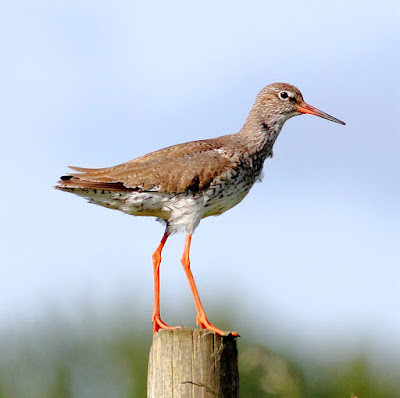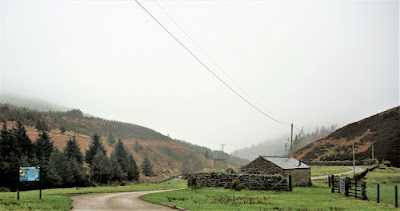This is a short post because there's not much news. And once again the culprit is the lack of decent weather in which to get outdoors for serious birding.
Let’s start with a request to regular readers to take a look at a recent photographic competition. The same readers will know that The Forest of Bowland features occasionally in Another Bird Blog.
“Hi Phil”
“Many congratulations, your image 'Redshank' has been shortlisted in the Forest of Bowland photo competition. The prize allocation will be decided by the public and voting will run from Monday 28th November to Monday 12th December, so please feel free to share the web link (from Monday) with friends and family, we will also promote voting via social media.”
Hetty Byrne
Sustainable Tourism Officer
Here’s the photo and you know what to do folks. If by any chance I win a prize I’m afraid that Sue has bagged the other place for the weekend trip but if I win a hamper of Bowland Delights I will relate the gustatory sensations.
Redshank
Like the rest of the preceding days, Friday morning was wet & windy when I drove to Pilling to drop supplementary seed at our ringing site.
On the last visit here it looked as thought the regular pair of Stonechats had left. But no, today there they were again near one of their hangouts, a line of fenceposts 50 yards from where I looked. Although they stick like glue to each other it is very difficult if not impossible to get two in the viewfinder at once. It’s inevitable that with Stonechats the more striking males become the centre of attention to someone with a camera. In contrast, the less conspicuous female has a major advantage during the breeding season.
Stonechat
There was some commotion around the area of the pool with complaining crows and I immediately thought there was a raptor nearby. All I saw was a Grey Heron, a bird that crows don’t much like but one they will tolerate.
As I fed the whoosh net area there came a sudden and heavy shower from grey clouds above. I was in danger of becoming a drowned rat for the umpteenth time this last week or two. I took refuge in the car and wound the window partly down so as to watch another net ride that we scatter with seed.
After a while the usual species appeared – Blackbirds, Chaffinches, Greenfinches, Reed Buntings, a Robin or two and a chattering Wren. And a Brown Rat slinking through the slippery grass towards the new seed - so that’s where much of the seed is going.
Brown Rat
"Rats are found in nearly all areas of Earth which are inhabited by human beings. The only rat-free continent is Antarctica”.
And then I saw the reason for the earlier hoo-hah, a Sparrowhawk. It dropped from the trees to ground level and flew along the hedgerow to then swoop up and sit in a tree. Here it became less obvious to the naked eye of any passer by but in a handy spot for a fly by of the feeding station or a dash at passing birds.
Sparrowhawk
That’s all for now folks. Keep watching the weather forecasts and stay out of the rain.
Linking this weekend to Eileen's Saturday Blog and Anni in Texas.








































